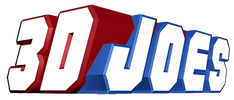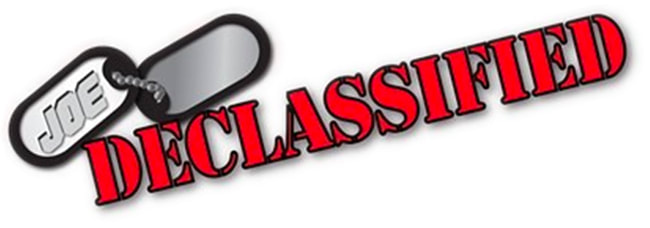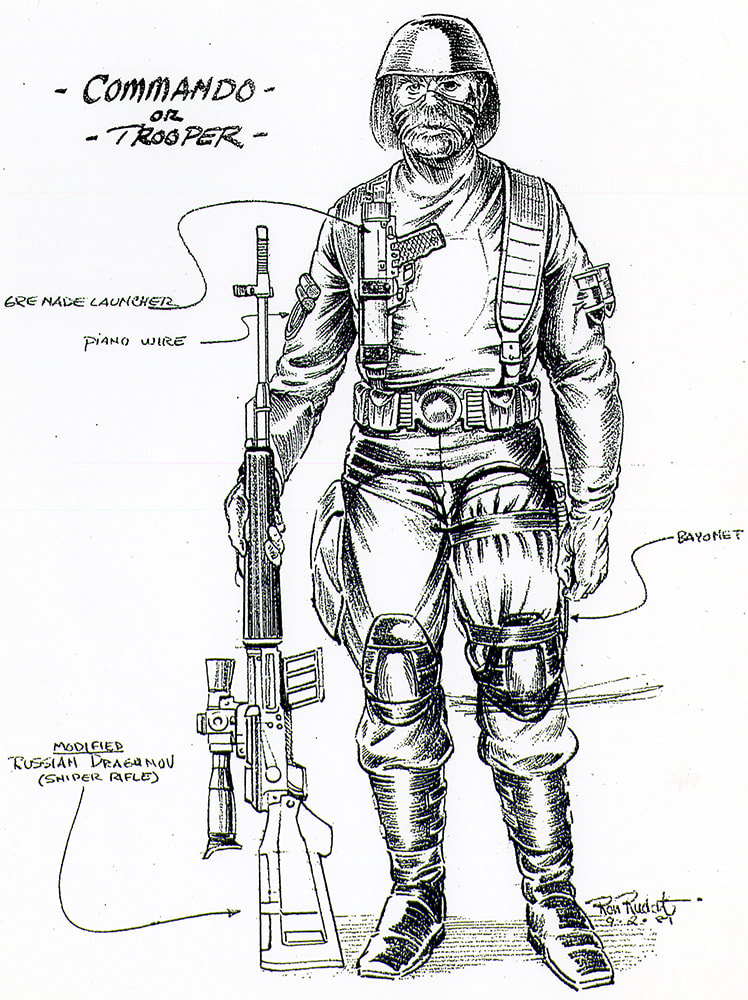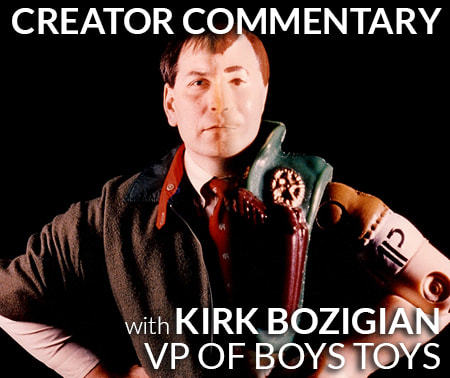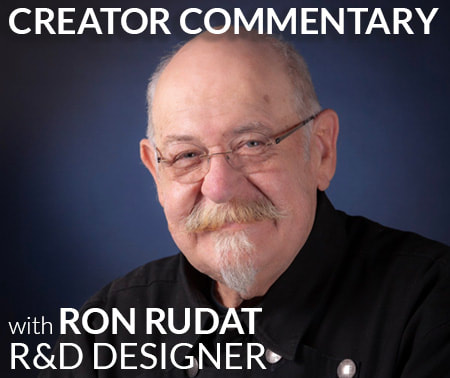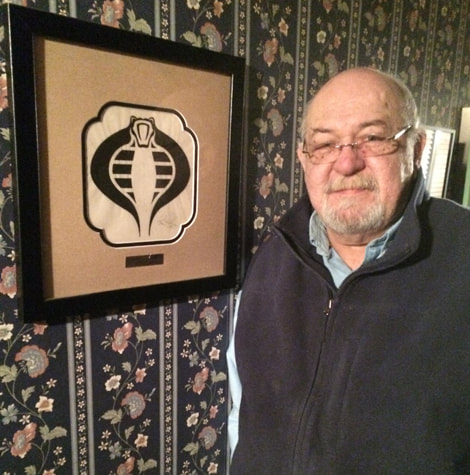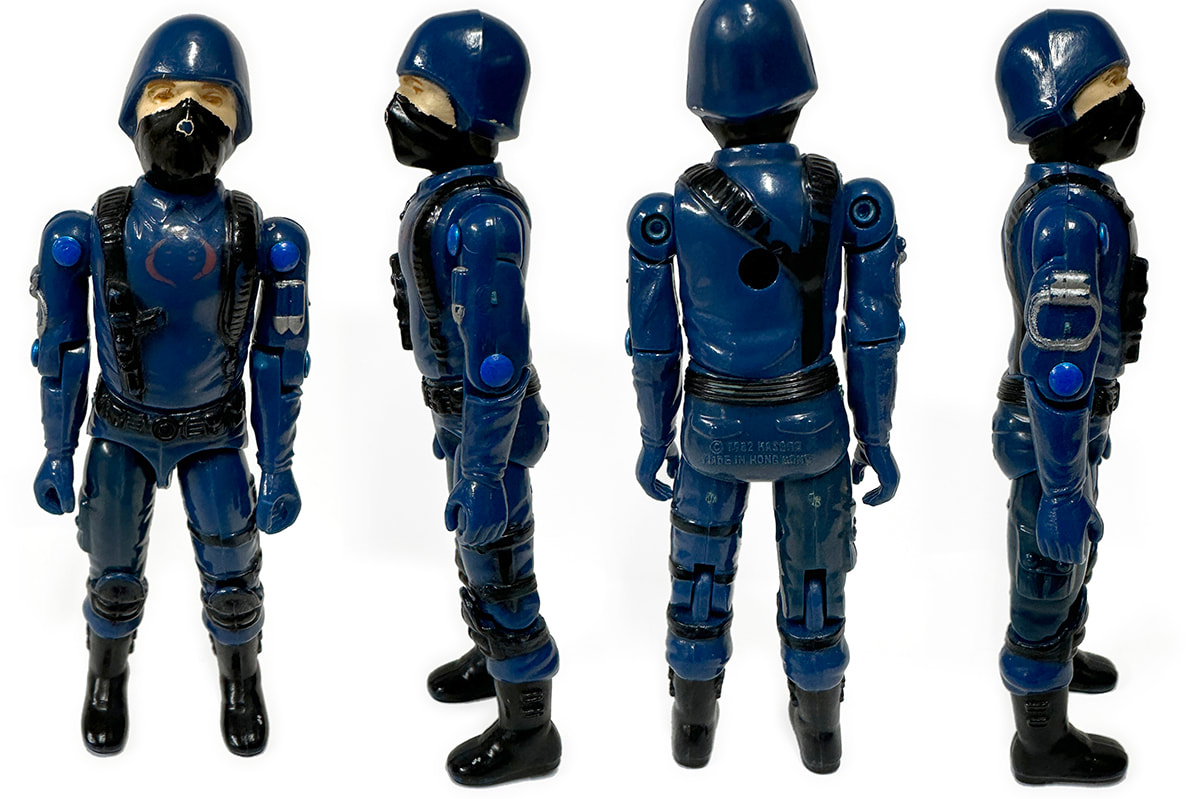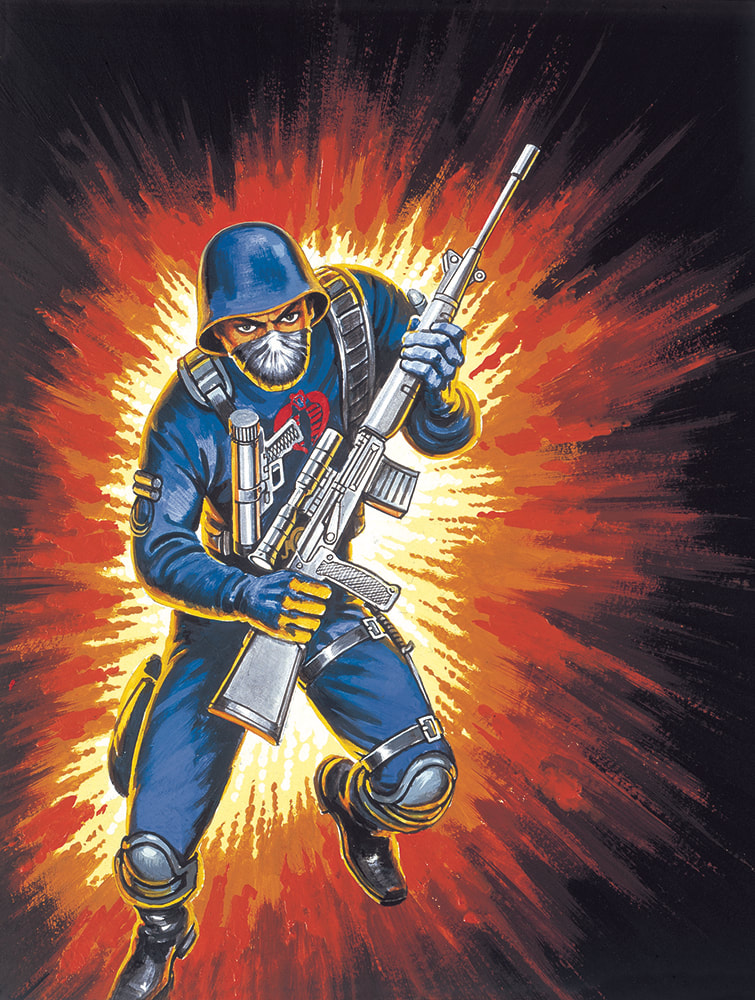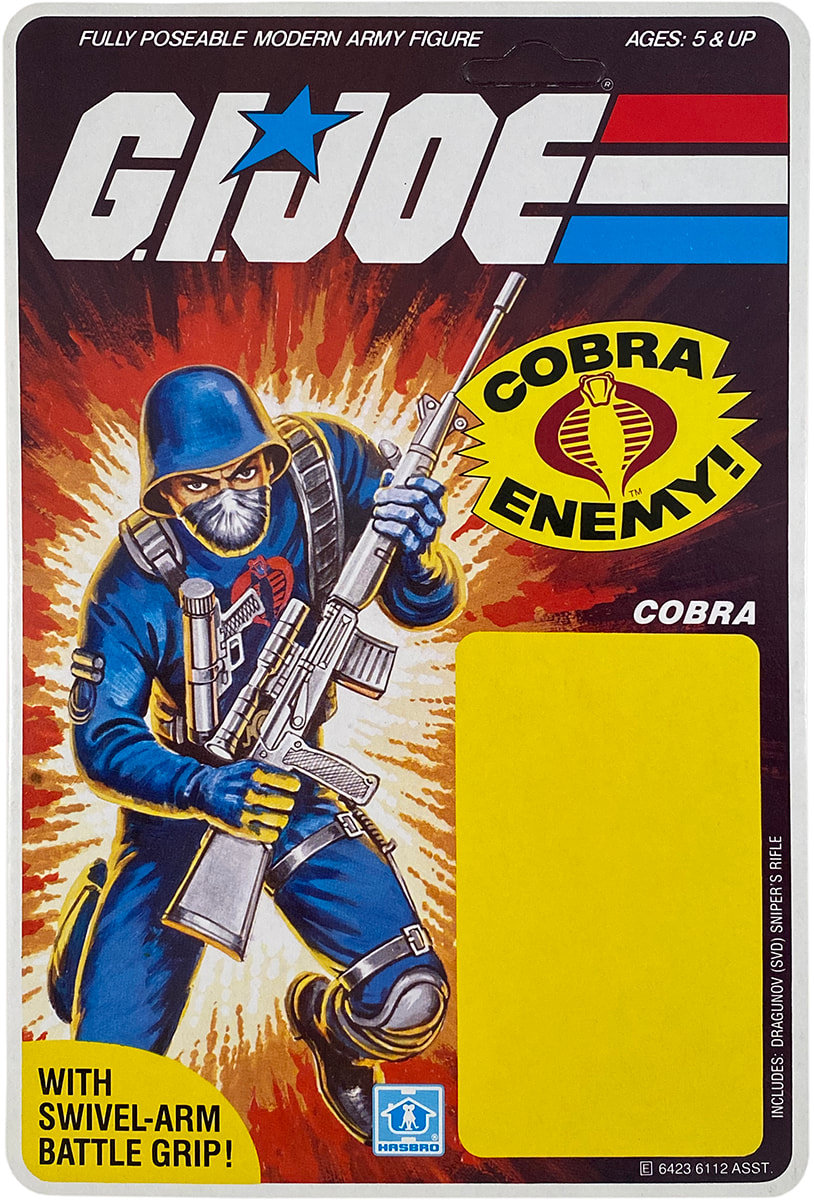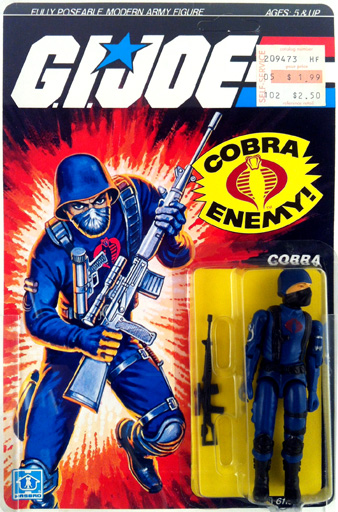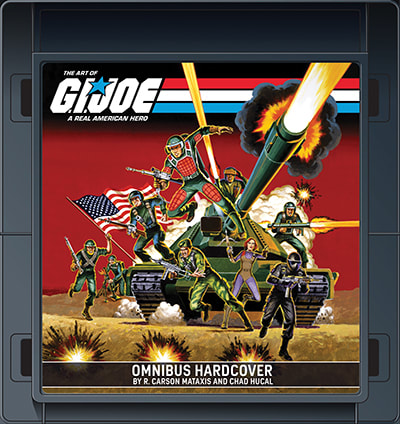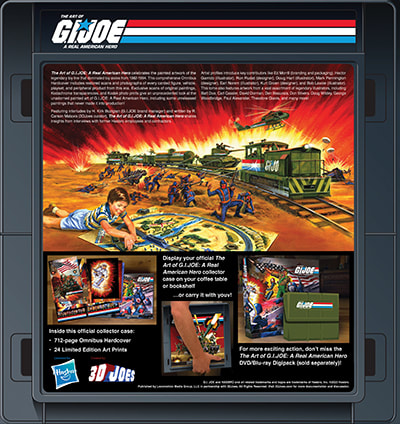Research and Ideation (or Sketching)
This "Commando or Trooper" illustration was signed and dated September 2nd, 1981 by Ron Rudat. Ron labeled a grenade launcher on his chest, piano wire on his right upper arm, a bayonet on his left thigh, and a modified Russian Dragunov (sniper rifle). We can assume that the rounds on his left upper arm fit the grenade launcher. The piano wire is commonly referred to as a garrote, and is used to strangle or cut into the neck of his adversary, slicing through the carotid arteries. This silent and deadly weapon is often used in situations where stealth is paramount.
Creator Commentary
Kirk Bozigian (G.I. Joe Product Manager) and Ron Rudat (R&D Figure Designer) discuss how the idea for a ruthless terrorist organization known as Cobra came to be, designing the figures, and the wildly successful Cobra Commander promotion.
Designing the Cobra Logo
Ron Rudat designed the Cobra figures and the Cobra logo. He still has the original Cobra logo design hanging in his hallway.
Refining the "Mickey Mouse" Cobra Logo
The earliest Cobra Commander figures featured a slightly different Cobra sigil on his chest. This variation is often referred to as "Mickey Mouse Cobra Commander" in the G.I.JOE community due to the Cobra's eyes looking like Mickey Mouse ears. This variation is rarer than the more refined logo variation that would quickly replace it.
Until recently, it was believed that only Cobra Commander was produced with this “Mickey Mouse” Cobra sigil – Cobra Commander was rushed into production to fill the December 1982 mail orders, while Cobra and Cobra Officer were released shortly after at retail with the more refined sigil. New evidence has emerged (with the full confidence and backing of 3DJoes and Joe Declassified) that Cobra and Cobra Officer Final Engineering Pilot (FEPs) featuring the “Mickey Mouse” Cobra logo were indeed produced.
Until recently, it was believed that only Cobra Commander was produced with this “Mickey Mouse” Cobra sigil – Cobra Commander was rushed into production to fill the December 1982 mail orders, while Cobra and Cobra Officer were released shortly after at retail with the more refined sigil. New evidence has emerged (with the full confidence and backing of 3DJoes and Joe Declassified) that Cobra and Cobra Officer Final Engineering Pilot (FEPs) featuring the “Mickey Mouse” Cobra logo were indeed produced.
1982 "Mickey Mouse" Cobra (FEP)
Final Engineering Pilots, or FEPs, are samples of near-production quality toys supplied to Hasbro from the factory. These samples were used in review to verify that Hasbro liked the paint detail placement. During the 1982-1994 run, these figures were sometimes sent to Hasbro in a group bag of 50, individually bagged, or sometimes carded. Examples of FEP’s have been found with different paint applications or plastic color compared to what was released for mass production.
Since retail samples of 1982 Cobra and 1982 Cobra Officer have never been found with the “Mickey Mouse” Cobra logo (either bagged or carded), we believe the figure shown above is a FEP. Photos of this figure are courtesy courtesy of Aaron Porter.
Since retail samples of 1982 Cobra and 1982 Cobra Officer have never been found with the “Mickey Mouse” Cobra logo (either bagged or carded), we believe the figure shown above is a FEP. Photos of this figure are courtesy courtesy of Aaron Porter.
Unadorned Package Art
The painting above was created by Coleman, Lipuma, Segal & Morrill, Inc. (CLS&M) with art direction by Ed Morrill and illustration by Hector Garrido.
Proof Card
A proof card (or proof) is an early printing of an action figure card back. These were used as a quality control to verify the card back is correct and to create mock ups for bubble placement and advertising pieces. Some proofs are printed on slightly thinner cardstock and others are found on production quality card stock. Proof cards can be found as a front side with a blank back, a back side with a blank front, or printed on both sides. All proofs are printed on a big sheet and individually cut. Examples have been found that are die cut by a machine or hand cut by a person.
This double sided, thick cardstock, die cut proof card features the 1984 "with swivel-arm battle grip!" callout graphic. Cobra, or Cobra Soldier as he was called in later years, was available at retail in the US from 1982-1985.
This double sided, thick cardstock, die cut proof card features the 1984 "with swivel-arm battle grip!" callout graphic. Cobra, or Cobra Soldier as he was called in later years, was available at retail in the US from 1982-1985.
